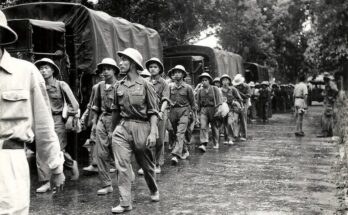Introduction
The American Civil Rights Movement was a defining era in U.S. history, marked by resilience, courage, and the relentless pursuit of justice. But what exactly fueled this movement? Why did millions of African Americans and their allies risk their lives to challenge systemic oppression? In this deep dive, we’ll explore the key moments, influential figures, and lasting impact of this historic struggle for equality.
The Roots of Racial Inequality in America
Before the Civil Rights Movement gained momentum, African Americans endured centuries of systemic racism. From slavery to Jim Crow laws, racial segregation and discrimination were deeply embedded in American society.
Slavery and Its Aftermath
For over 200 years, African Americans were enslaved, treated as property rather than people. Even after the Civil War and the 13th Amendment abolished slavery in 1865, discrimination persisted in new forms, such as Black Codes and sharecropping.
The Jim Crow Era
The late 19th and early 20th centuries saw the rise of Jim Crow laws, enforcing racial segregation in public facilities, education, and employment. “Separate but equal” was the legal doctrine established by Plessy v. Ferguson (1896), but in reality, African Americans were subjected to inferior treatment and services.
Early Civil Rights Efforts
Even before the 1950s, African Americans fought for their rights in various ways.
The NAACP and Legal Challenges
Founded in 1909, the National Association for the Advancement of Colored People (NAACP) played a crucial role in challenging racial injustices. Lawyers like Thurgood Marshall worked to dismantle segregation through landmark cases like Brown v. Board of Education (1954), which declared school segregation unconstitutional.
The Great Migration
Between 1916 and 1970, millions of African Americans moved from the rural South to urban centers in the North and West, seeking better opportunities and escaping racial violence. This migration shifted political and social dynamics, setting the stage for greater activism.
The Civil Rights Movement Takes Shape
The 1950s and 1960s saw a surge in organized efforts to end racial segregation and discrimination.
The Montgomery Bus Boycott (1955-1956)
Rosa Parks’ arrest for refusing to give up her seat to a white passenger in Montgomery, Alabama, sparked a year-long bus boycott led by Martin Luther King Jr. The boycott led to a Supreme Court ruling that segregation on public buses was unconstitutional.
The Little Rock Nine (1957)
When nine African American students attempted to integrate Central High School in Little Rock, Arkansas, they faced violent resistance. President Dwight Eisenhower had to send federal troops to enforce desegregation.
Key Figures of the Civil Rights Movement
The movement was driven by courageous individuals who risked everything for equality.
Martin Luther King Jr.
A Baptist minister and civil rights leader, MLK championed nonviolent resistance. His “I Have a Dream” speech in 1963 became a defining moment in American history.
Malcolm X
Unlike MLK, Malcolm X advocated for Black self-defense and empowerment. As a prominent figure in the Nation of Islam, he called for African Americans to take control of their own destiny.
Rosa Parks
Often called “the mother of the Civil Rights Movement,” Parks’ simple act of defiance on a Montgomery bus sparked a national movement.
John Lewis
A leader of the Student Nonviolent Coordinating Committee (SNCC), Lewis played a key role in Freedom Rides and the Selma marches.
Major Events and Achievements
The Civil Rights Movement saw several pivotal moments that changed American history.
The March on Washington (1963)
Over 250,000 people gathered in Washington, D.C., demanding jobs and freedom. This is where MLK delivered his famous “I Have a Dream” speech.
The Civil Rights Act of 1964
This landmark legislation outlawed discrimination based on race, color, religion, sex, or national origin in public places and employment.
The Voting Rights Act of 1965
Following the Selma to Montgomery marches, this law banned literacy tests and other barriers preventing African Americans from voting.
The Fair Housing Act (1968)
This law prohibited discrimination in housing, ensuring equal opportunities for African Americans to buy and rent homes.
The Movement’s Challenges and Opposition
The Civil Rights Movement faced fierce resistance from segregationists, law enforcement, and white supremacist groups.
Violence and Intimidation
Activists were beaten, jailed, and even murdered. Bombings, such as the 1963 16th Street Baptist Church bombing, killed innocent children.
Political Opposition
Southern politicians used legal loopholes to resist integration, while law enforcement often turned a blind eye or participated in racial violence.
The Legacy of the Civil Rights Movement
The movement’s impact is still felt today, but the fight for racial justice continues.
Ongoing Racial Inequality
Despite legal victories, systemic racism persists in areas like criminal justice, education, and employment.
The Rise of Modern Activism
Movements like Black Lives Matter draw inspiration from the Civil Rights Movement, continuing the fight against racial injustice.
Representation in Politics and Society
Thanks to civil rights activism, African Americans have gained greater representation in politics, media, and business.
Conclusion
The American Civil Rights Movement was a pivotal chapter in history, proving that collective action can bring change. But the struggle isn’t over. As we reflect on the sacrifices made, we must ask ourselves: What role will we play in continuing the fight for equality?
FAQs
1. What was the main goal of the Civil Rights Movement?
The main goal was to end racial segregation and discrimination and secure equal rights for African Americans.
2. Who were the major leaders of the movement?
Key figures included Martin Luther King Jr., Malcolm X, Rosa Parks, and John Lewis.
3. How did the Civil Rights Movement impact American law?
It led to landmark legislation like the Civil Rights Act of 1964 and the Voting Rights Act of 1965.
4. What role did nonviolent protest play in the movement?
Nonviolent resistance, inspired by Mahatma Gandhi, was a central strategy used to challenge injustice and gain public support.
5. Is the fight for civil rights over?
No, racial inequality still exists in many forms, and modern movements continue advocating for justice and equality.


